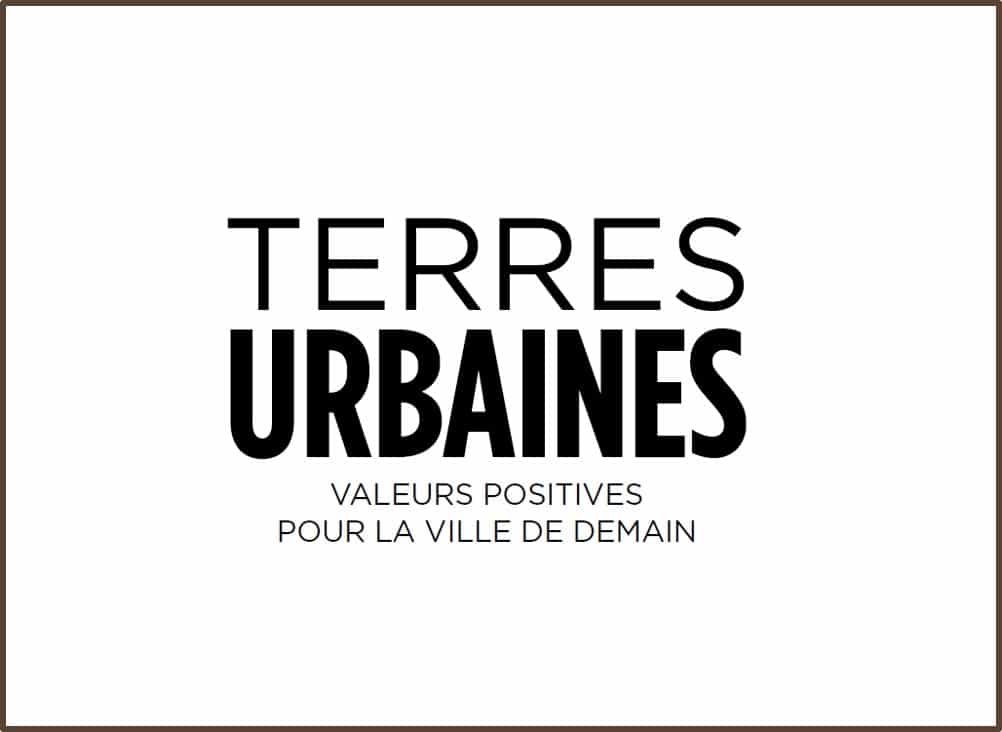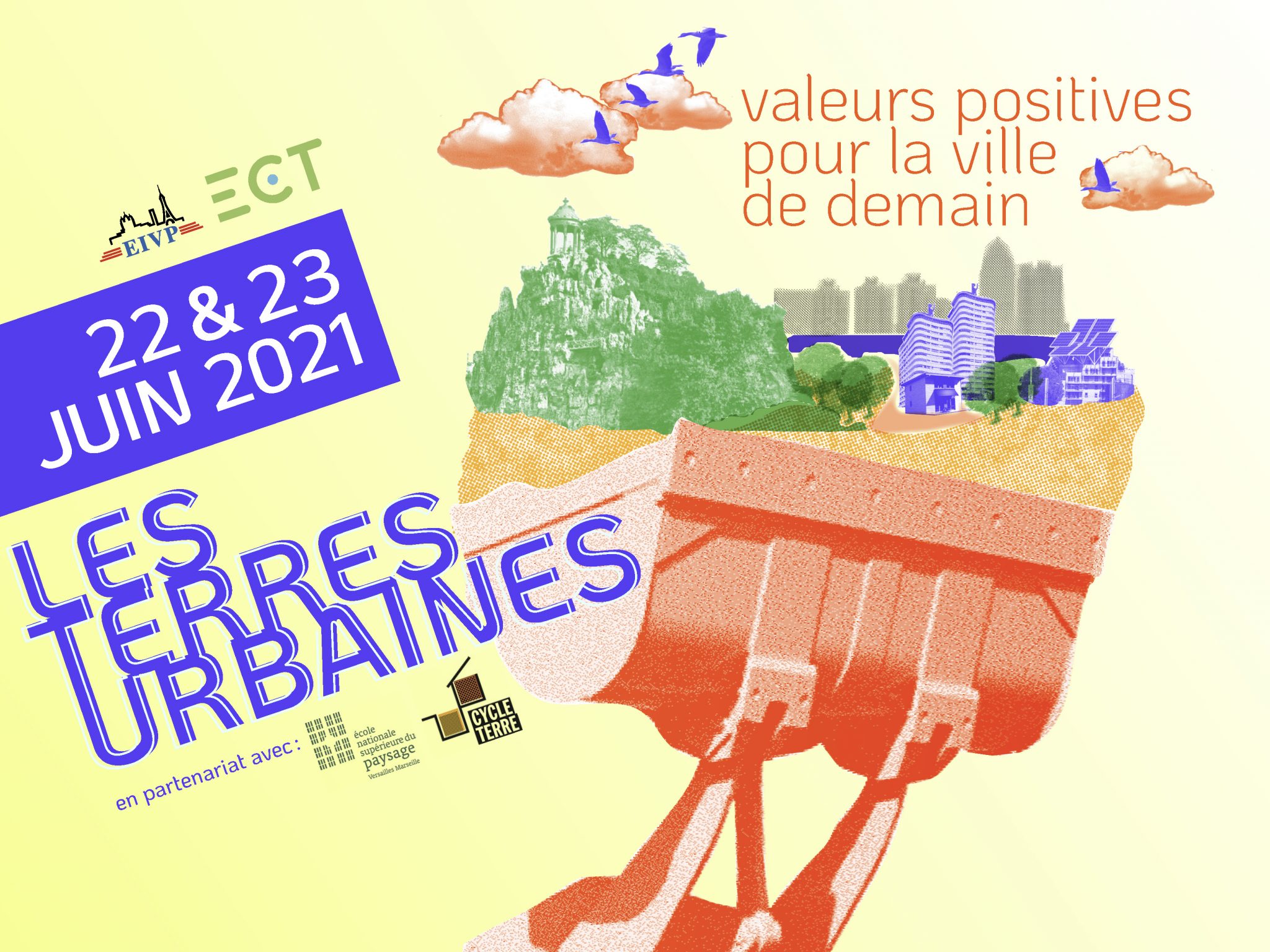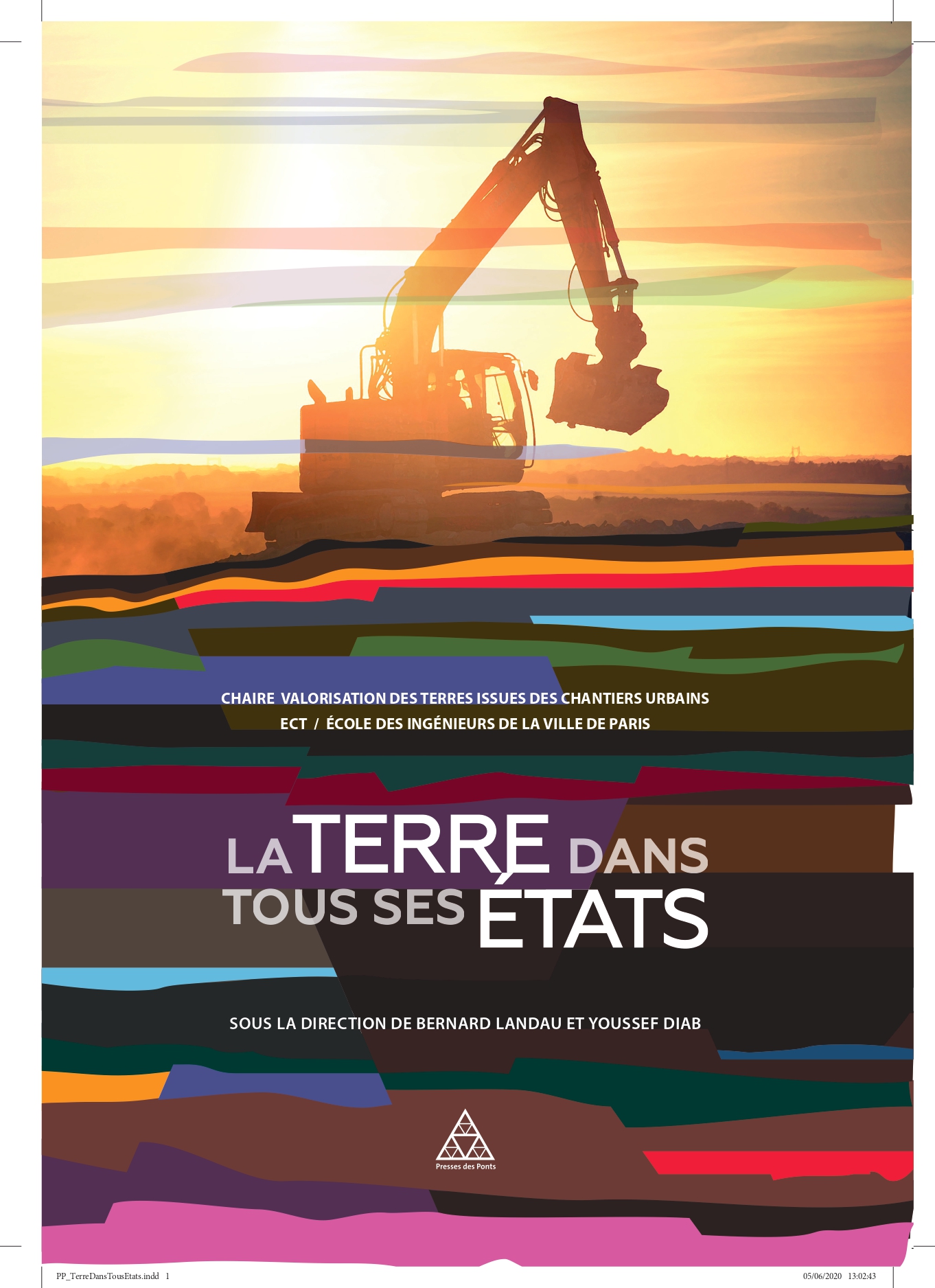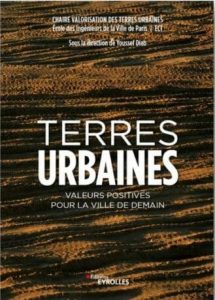EIVP and ECT conference « Earth in all its states »

Paris, 8 December 2022 – The business chair in Upcycling Urban Soil or Valorisation des terres urbaines, which is run by the City of Paris School of Engineering or École des Ingénieurs de la Ville de Paris together with ECT, published in Éditions Eyrolles the book « Urban Soil, an Asset for the City of Tomorrow » or « Terres Urbaines, valeurs positives de la ville de demain », under the direction of Youssef Diab.
New development goals for excavated soils
The ecological transition leads to a re-examination of the practices and development approaches of urban management, which are notable for excessive consumption of resources of all forms – materials, energy, water, land, etc – and a lack of recycling. The question of excavated soil and its use is a crucial one, yet its place in the system is too often overlooked. This indeed is the subject of the business chair « Upcycling Urban Soil » which is at the centre of the ecosystem of studies concerning urban soil through biennial conferences, meetings and the publication of this new work.
Questions relating to soils, their management and upcycling are a subject of major importance in terms of their potential contribution to a sustainable regional policy of « circular economics ». The spatial scale of management, methods of upcycling and the symbolic aspects of upcycling directly involve urban engineering and the development of the region.
« To transcend town planning based on a master plan, it’s vital to change the conceptual frameworks, and the methods of production and management, of the urban environment. It is no longer a question of separating them by phase or by organisation concerned, but of aiming for approaches that integrate those concerned with the issues and, above all, the phases of life of the works and thus of the projects. The integrated management of soil with other urban issues is the subject of this book. »
Youssef DIAB and Antoine GRUMBACH
Soil : a vector of the urban dynamic and its sustainability
This work positions urban soil as a vector of the urban dynamic and its sustainability. Substantial and diverse upcycling of soil emerges from the outset as a major contributing factor in this sustainability. The book explores these aspects, divided into four major current themes:
- The rehabilitation of derelict sites, as a structuring element for a new regional landscape;
- The issues of landscape and its fundamental role in the upcycling of urban soil;
- A construction material that respects the environment as it is geosourced;
- The indispensability for the urban sphere of issues relating to green spaces and biodiversity.
The authors : Reflecting a multidisciplinary view
« Urban Soil, an Asset for the City of Tomorrow » is the result of a multidisciplinary process. The authors are town planners, engineers, landscape designers and architects. In line with the conference that took place in 2021, this book brings together an ecosystem of specialists. And, through the example of structuring urban projects, enables the reader to discover new practices that are relevant to the management of soil in France and Belgium, but also in an international metropolis such as Cairo.
The authors : Michel Audouy, Alain Bourdin, Christophe Bouleau, Magali Castex, Ronald Charvet, Bernard Chevassus-au-Louis, Silvia Devescovi, Youssef Diab, Mathieu Fernandez, Nicolas Gilsoul, Jérôme Gleizes, Antoine Grumbach, Franck Jung, Marc Kaszynski, Laurent Mogno, François Ménard, Jacqueline Osty, Loïc Pianfetti, Élisabeth Rémy, Nadya Rouizem Labied, Reda Semlali
To buy the book at the Librairie Eyrolles, click here
Urban soil: An asset for the city of tomorrow
[Symposium, 22 and 23/06/2021]
This new symposium from the EIVP and ECT business chair "Upcycling Urban Soil" took place in partnership with the ENSP, and with the participation of Cycle Terre.
After a first symposium in April 2019 on "Earth in all its States", which analysed urban soil as a resource and material with many aspects, ECT and the EIVP take a deeper look and put soil at the heart of current debates on the sustainable city. Social, environmental and economic perspectives are at the centre of the examination that EIVP is undertaking in the context of their teaching and research chair.
Soil is an under-appreciated resource, and we believe it has a positive value in material / physical terms, in environmental and economic terms, and also symbolically and socially.
Every year in the Paris region nearly 10 million cubic metres of inert soil, the equivalent of four Great Pyramids of Giza, are produced by public and private works. It's a quantity that represents a significant issue for sustainability in urban and near-urban regions.
The conference "Urban Soil: An asset for the city of tomorrow" proposes treating this resource as a vector for the rehabilitation of derelict sites, as a defining element for new landscape in the regions, as a construction material that is respectful towards the environment, and as an essential element in the urban integration of green spaces of varying kinds and of biodiversity.

These 4 focal points demonstrate how urban soil provides a practical representation of a new and positive approach to their inclusion into policy-making for the sustainable city, as with energy; combining economy of resources and re-use of materials in a way that is respectful of the environment.
A great variety of examples and approaches both theoretical and historical will be explored during these four half-day sessions. International examples, debates, and analyses in both national and Île-de-France contexts will be discussed. The role of a new urban engineering will also be examined as a factor in a better consideration of inert soil in the sustainable city.
The programme for the symposium was prepared by a committee including Y. Diab, S. Alix, A. Grumbach, R. Semlali, V. Piveteau, B.Julien-Labruyère, S. Devescovi and M. Castex
The entire symposium is available to see again
Part 1: Land, Soil and the Sustainable City (I)
- Conference opened by Laurent Mogno (chairman of ECT) and Franck Jung (director of the EIVP). Overview of the conference and of the business chair 'Upcycling Urban Soil': Antoine Grumbach (AG Territoires) and Youssef Diab (manager of the 'Upcycling Urban Soil' chair at the EIVP, lecturer in urban engineering, Université Gustave Eiffel): see it here
- For a 'circular economy' in land use: Marc Kaszynski (chairman of LIFTI): see it here
- Support biodiversity with made-land developments: Bernard Chevassus-au-Louis (biologist, chairman of Humanité & Biodiversité): see it here
- The innovative 'circular economy' model for excavated soils: Laurent Mogno, chairman of ECT see it here
- Re-using soil in support of urban revitalisation: The Al-Azhar Park in Cairo, Christophe Bouleau (senior conservation officer, Aga Khan Trust for Culture) see it here
- Summary of the morning by Reda Semlali (director of institutional relationships and partnerships, ECT) and Youssef Diab: see it here
Part 2: Making Landscape: A positive view of the role of excavated soil
- Building Landscape: A short history of earthworks and landscaping, Michel Audouy (lecturer at the ENSP): see it here
- Fabricated Hills: Gaalad Van Daele (architect and researcher, ETH Zürich, editor of Accattone magazine): see it here
- Inert soil: opportunities for making landscape, Loïc Pianfetti (head of the Paysage & Biodiversité department, SNCF Networks): see it here
- Round-table discussion between urban engineering and landscape, between a landscape architect, Henri Bava; an architect, Antoine Grumbach; and two researchers, Mathieu Fernandez, engineer and historian; and Hong Zhu, landscape architect / Conclusion by Vincent Piveteau (director of the ENSP) and Youssef Diab
Part 3: Earth as a Material: The Cycle Terre project (Action Urbaine Innovante)
- Soil, a living material for constructing a town: Jean Dethier, architect, author of 'The Art of Earth Architecture: Past, Present, Future'; commentaries by Romain ANGER, engineer (Amaco): see it here
- Presentation and progress report for Cycle Terre, an Urban Innovative Action (UIA): Silvia Devescovi (project officer for the Cycle Terre project, Ville de Sevran); Magali Castex (project officer for Cycle Terre, Grand Paris Aménagement): see it here
- Reproducing the Cycle Terre model/approach, and securing its future: Question and answer session, Sophie Schlewitz (Quartus): see it here
- Reactions of two key observers: Raffaele Barbato (coordinator of UIA projects) and François Ménard (scientific director, PUCA): see it here
- Conclusion of the morning by Benoist Apparu (chairman of the board of In’li): see it here
Part 4: Land, Soil and the Sustainable City (II)
- Playlist of the half-day
- Dynamics of the worsening landscape situation in the industrial section of the Meuse valley around Liège: Reclaiming degraded land is a central issue for the region. Joël PRIVOT (architect and town planner, consultant and researcher at the Université de Liège): see it here
- The art of the urban hedgehog. Diplomacy and sharing the basis of life. Nicolas Gilsoul (architect, science PhD, landscape architect and lecturer at the École Nationale Supérieure d’Architecture de Paris-Malaquais): see it here
- Urban soils, a fertile and durable base: Jacqueline Osty (landscape architect, winner of the Grand prix de l'Urbanisme 2020): see it here
- New approaches to make town planning sustainable: Thinking from humanities & social sciences meets thinking from nature in a dialogue between Luc Abbadie (ecologist, professor at the Sorbonne University) and Alain Bourdin (sociologist and town planner, professor at the Université Gustave Eiffel): see it here
- Summary and conclusion of the conference by Jérôme Gleizes (chairman of the EIVP, elected member for Paris), Youssef Diab: see it here

The symposium was followed up with a collective work revealing the thousand and one ways in which inert soil can be upcycled. A golden opportunity to shine a light on excavated soil, which is at the heart of initiatives that are often unsung. Shows that soil is a marvellous resource.
The first symposium on the upcycling of excavated soil: "Earth in all its States"
The EIVP (City of Paris School of Engineering), a leading university for urban engineering, and ECT, the French leader in the upcycling of excavated soil, organised the first conference on "La Terre dans tous ses États" or "Earth in all its States". This conference is one product of the ECT business chair at the EIVP.
EARTH IN ALL ITS STATES ("LA TERRE DANS TOUS SES ÉTATS")
9 and 10 April 2019
at the EIVP, 80 rue Rébeval
Conferences and round tables: Researchers, developers, elected representatives, experts
Visit: ECT's site for management of excavated soil at Moissy-Cramayel (Seine-et-Marne, 77)
1001 ways to upcycle soil
Every year in the Paris region, nearly 10 million m3 of inert soil, the equivalent of four Great Pyramids of Giza, are produced by public and private works - a quantity that is a barometer of the sheer volume of public works currently happening in the Paris metropolitan area.
This work, arising from the conference "Earth in all its States", reveals the thousand and one ways in which inert soil can be upcycled. It's a golden opportunity to shine a light on the principles of 'circular economy' and ecological mitigation that are at the heart of these often unsung activities.
Soil is a marvellous resource!
A wide variety of solutions will be explored, ranging from remediation of polluted zones and backfilling of mines and quarries to the creation of planted parkland, the restoration of farmland, the transformation of soil into a construction material or topsoil, and the creation of works of art or works of urban engineering.
See the programme in detail


